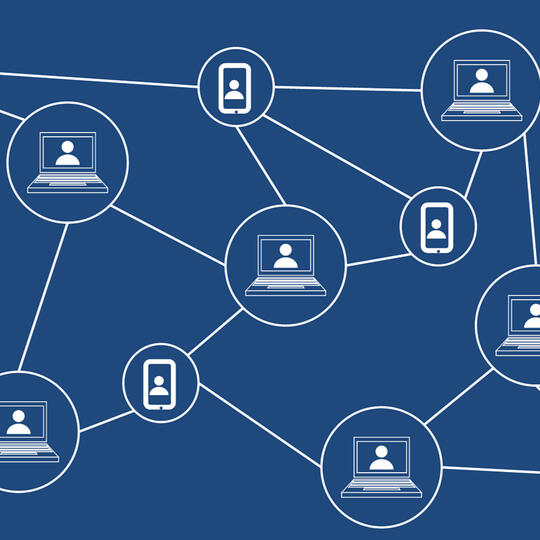
SLC Tech Solutions Ltd
We specialise in providing ISO 27001:2022 Implementation, Transition and internal Auditing services, Cyber Security and Professional IT Consulting services.
Established in 2018, we help businesses navigate the complex world of Information Technology with confidence.
Days until ISO 27001:2022 is due!
We can help you with your ISO 27001:2022 Implementation, Transition or Audit

About Us
Founded in 2018, we recognised a need for innovative solutions for IT challenges.
We have been involved with large scale global deployments of IT infrastructure and collaboration systems in a variety of business sectors.
We have always focused on cost effective outcomes to save time and money.

What we do
ISO 27001:2022 Compliance: Ensuring your business meets all regulatory requirements with ease, reducing the risk of non-compliance penalties.
Information Security: Protecting your most valuable asset - your data - with robust security measures tailored to your needs.
Microsoft Stack: We excel in leveraging the Microsoft ecosystem to enhance your business operations, from Office 365 to Azure cloud solutions.
Asset Management: Optimising the lifecycle of your IT assets, from procurement to retirement, ensuring maximum ROI.
Cyber Security: Safeguarding your digital environment against ever-evolving cyber threats with proactive defence strategies.
Penetration Testing: Conducting thorough security assessments to identify and mitigate vulnerabilities before they can be exploited.

Why choose us?
Regulatory Compliance: Navigating the complex landscape of regulations can be daunting. We simplify this process for you, ensuring compliance without compromising on efficiency or innovation.
Expertise Across Multiple Domains: With a comprehensive service range from regulatory compliance to cyber security, including Microsoft Stack specialisation, we offer a one-stop solution for all your IT requirements.
Proven Track Record: Since our inception in 2018, we've successfully managed numerous projects, ensuring client satisfaction through results-driven strategies and innovative solutions.
Strategic Project Management: Our project planning capabilities mean we deliver on time and within budget, with clear communication and transparency at every step.
Certified Professionals: Our team consists of certified experts in various IT domains, providing you with the assurance of dealing with knowledgeable and skilled professionals.

Who We Are
We’re an eclectic bunch of IT enthusiasts united by a passion for solving problems, securing systems, and, admittedly, a serious dependence on caffeine. Our team brings together a rich tapestry of expertise, drawn from diverse corners of the tech world, ensuring we’ve got the skills to tackle any challenge you throw our way.We’re cybersecurity specialists who live to outsmart threats, ISO compliance and auditing experts who know the standards inside out, and we can’t forget our military intelligence veterans, bringing razor-sharp precision and a knack for seeing the bigger picture.What ties us together? A commitment to making IT work for you, whether that’s locking down your security, guiding you through ISO 27001 certification, or boosting your cloud infrastructure.We’re proud to blend technical know-how with a down-to-earth approach. Think of us as your IT allies, here to simplify the complex and secure the vulnerable. Ready to meet the team that’s got your back? Get in touch, we’d love to chat over a virtual cuppa!

Our Services
We bridge the gap between technology and security. Our suite of services is designed to fortify your business against digital threats, ensure compliance with international standards, and optimise your IT infrastructure. Whether you're looking to enhance your cyber security posture, achieve ISO 27001 compliance, or require strategic IT consulting, our team of experts is here to guide you through every step. Discover how we can protect, streamline, and advance your operations with our tailored solutions in Cyber Security, ISO 27001 Compliance, and IT Consulting.

Cyber Security
Protecting your business, assets, and peace of mind is our priority. We offer a comprehensive range of professional services designed to identify vulnerabilities, strengthen security, and uncover critical information. Whether you need to safeguard your digital infrastructure or ensure the integrity of your physical environment, our experienced team delivers tailored solutions to meet your unique needs.

Penetration Testing
Penetration testing can be regarded as ethical hacking, or what is sometimes called white-hat hacking. It involves a controlled technical exercise designed to systematically assess the security of your IT infrastructure and staff, employing all the techniques that real-world hackers might use. Unlike malicious hacking, penetration testing is conducted by a professional firm within a pre-agreed scope and at a scheduled time.As a technical exercise, it encompasses both active and passive analyses of IT systems and applications, alongside probing the human factor through social engineering. Penetration tests should be seen as an essential part of your risk management strategy.The objectives of penetration testing are dual: firstly, to pinpoint and exploit vulnerabilities in the confidentiality, integrity, and availability of data. Secondly, it provides recommendations for remediation and guidance on mitigating the risks associated with these vulnerabilities being exploited.

why do it?
Stay one step ahead of cybercriminals Conducting regular security assessments gives you a clear view of your standing in today's dynamic threat environment. This process helps you pinpoint and patch vulnerabilities before they can be exploited by attackers.
Take command of your infrastructure With the evolution of technology and expansion of your business, the complexity of technical infrastructures increases. It's easy for aspects to fall out of control, or you might lack the specific expertise to ensure your security measures are correctly implemented. Each assessment highlights the dynamics of your system, revealing interdependencies that could affect security. Remember, your security is only as strong as its weakest point.
Demonstrate your security strength You might believe your infrastructure is highly secure, supported by various processes, procedures, and staff training. But do you have proof? A penetration test offers a practical way to validate your security measures, providing tangible evidence that your controls meet the standards and function as intended. This validation is crucial not only for your own reassurance but also for maintaining trust with customers and suppliers.
Effective risk management Penetration tests evaluate your business risks, examining the potential impacts on the confidentiality, integrity, and availability of your data. These insights help management and technical teams to prioritise, plan, budget, and address risks methodically.
Because compliance is mandatory There's an increasing array of legal obligations, regulatory requirements, industry standards, and best practices that advocate or mandate regular penetration testing. This includes standards like PCI DSS, ISO 27001, FCA, HMG, and CoCo, among others. While compliance doesn't ensure security, these frameworks guide towards maintaining a robust security posture.
Safeguard your enterprise It's obvious that security breaches spell disaster, with significant damage to your brand's reputation and substantial financial loss. Penetration testing significantly lowers the risk of a breach, safeguarding the investment in your organisation and bolstering confidence among current and prospective customers.

Considerations
Think about the scope Getting the scope correct is crucial. A mis-scoped test can yield limited or no useful results, rendering the time and effort spent as wasted.
Keep your objectives in mind Failing to understand your requirements can lead to setting up unrealistic test conditions.
Set appropriate budgets The scope and complexity of the systems and applications you wish to test will be directly influenced by your budget. Ensure your budget allows for comprehensive testing of all necessary components.
Get the right type of test There are various types of penetration tests, and selecting the appropriate one is essential. We will discuss the specifics of different test types later in this white paper.
Trust your testers Choosing the wrong team for the job can result in a flawed test or even damage to your systems. Do your due diligence on the company to ensure they possess the necessary expertise and skills.
Be prepared Depending on the tests, you might encounter high resource usage, increased latency, and numerous alerts. Prepare for these by selecting suitable targets, timing, and test types.
Really be prepared Penetration tests can affect operational services, so it's advisable to conduct a full backup before starting the testing process.

Limitations
Penetration testing is not a magic solution No penetration test can assure 100% security, given that new vulnerabilities, techniques, and technologies emerge daily. However, what it does offer is evidence that you've taken steps to make your systems as secure as possible, thus significantly lowering the likelihood of a successful attack.
Tests are time-limited A penetration test captures the security state of your systems at a specific moment. This is why many security standards require periodic retesting, commonly every six months or yearly, to keep up with evolving threats.
What's the scope? Bear in mind that you're only examining elements within the defined scope. By nature, penetration tests are confined to agreed-upon boundaries. While you could instruct a testing company to "hack everything", this approach would likely be inefficient and costly. A more effective strategy is to focus on a scope that is both broad and deep enough to be meaningful.
Human components Be cautious of tests that solely target technical infrastructure, as human factors can be equally critical. The sophistication, maturity, and success of attacks aimed at the human aspect of security are on the rise. Including an element of social engineering in your tests is advisable to assess how well your staff can safeguard your organisation.

Approach
White Box In contrast to a black box test where nothing is disclosed initially, a white box test provides full transparency to the testers. This includes detailed breakdowns of target systems, network diagrams, and firewall configurations. Although not as "real-world" as a black box test, it permits a much more exhaustive examination. By exploring every facet of the environment, vulnerabilities can be identified more quickly and in greater detail. The primary disadvantage is its lack of realism, since actual attackers wouldn't have such complete insight into the system's architecture, potentially skewing the test's bias. However, in terms of security, can there ever truly be 'too much' information?
Black Box This represents what many consider a standard controlled hack. It's designed to mimic real-world scenarios, where minimal information is given to the penetration testers beforehand. This approach is beneficial because it positions the tester in the same shoes as a genuine hacker, with scant or no prior understanding of the environment. The downside of black box testing is that the allocated time might not suffice to cover everything, resulting in some areas of the infrastructure remaining untested, possibly due to not being found.
Grey Box As the name suggests, a grey box test shares some but not all information about the target systems with the testers. This middle-ground approach is the most prevalent type of penetration testing, allowing testers to conduct a systematic attack without requiring exhaustive knowledge of the systems they're testing.

Positioning
Penetration tests can be conducted from an external perspective, an internal one, or a combination of both. The objective remains consistent, but the approach varies based on the origin of the simulated attack.
Internal penetration testing mimics an attack where the security perimeter has already been breached. It focuses on what an attacker, or potentially a malicious insider, could observe and accomplish within your network. This includes moving between networks, intercepting internal communications, and more.
External penetration testing simulates an attacker's capability to infiltrate your internal network from outside sources or to extract sensitive information from publicly accessible assets like web applications or email servers.

Types of Penetration Test
Various types of penetration tests exist, each tailored to evaluate different facets of your security strategy. Below are the most common types, generally applicable to all organisations:Please note that descriptions for these tests can differ, with varying terminology used by different companies. It's advisable to seek a detailed service description to avoid confusion, rather than just focusing on the test's name.
Infrastructure or Network Penetration Testing This test evaluates the security posture of an infrastructure or network, checking aspects like running services, patch levels, misconfigurations, design flaws, and the efficacy of security controls. The aim is to detect and exploit vulnerabilities within the network.
Application Penetration Testing This involves examining an application's functionality, process flow, and security measures from both unauthenticated and authenticated viewpoints. It targets areas like access control, session and configuration management, error handling, data protection, and input validation. Application testing provides an external perspective on how different components of an application interact, potentially exposing direct or indirect security vulnerabilities.
Configuration/Build Review Testing This test reviews the existing setup of various system components. It's a non-invasive method aimed at auditing configurations to ensure they adhere to hardening standards and best practices. This helps guarantee that both current and future deployments follow industry guidelines, minimising risks of tampering or exploitation.
Social Engineering Focusing on the human aspect of security, social engineering tests attempt to gain access to sensitive information through psychological manipulation. Techniques include phishing emails, phone calls, exploiting operational procedure weaknesses, and attempting to bypass physical security measures.
Wireless Penetration Testing This test assesses weaknesses in wireless networks by examining packet data, access points, rogue devices, encryption mechanisms, and the status of patches.

Methodology
Most penetration testing firms adhere to a similar methodology when conducting tests, which typically follows a 7-step lifecycle:
Scope Definition & Pre-Engagement Interactions Here, all requirements are collected, and objectives are established. This is where the types of tests, formats, timelines, and constraints are formally agreed upon, ensuring a well-controlled and effective exercise.
Intelligence Gathering & Threat Modelling This step involves reconnaissance to gather maximum information. This data is then used to identify potential attack vectors for the subsequent phases of vulnerability assessment and exploitation.
Vulnerability Analysis The goal here is to identify weaknesses in networks, systems, or applications through both active and passive methods. This includes looking at host and service misconfigurations, patch levels, or application design flaws.
Exploitation Using the vulnerabilities identified, both external and internal systems within the scope are targeted. This involves deploying a mix of standard and custom exploits to manipulate incorrect configurations, bypass security measures, access sensitive data, and generally gain entry to the target systems.
Post-Exploitation This phase aims to assess the value of compromised targets by attempting to escalate privileges and move laterally to other systems and networks within the defined scope. Afterwards, any scripts or additional attacks introduced by testers are removed to prevent further risk to the systems.
Reporting All activities and findings from the previous steps are documented in a report. A quality penetration testing company will provide a comprehensive yet accessible report that includes:
Risks related to the current setup, configuration of servers/applications
Identified vulnerabilities and active services on servers and applications
Methods used to exploit each security flaw
Steps for remediation
Short-term and long-term action plans
Note that vulnerabilities which are identified but not exploitable should still be reported. It's advisable to request a sample report from the testing company beforehand to understand what to expect. Reports filled with jargon or difficult to interpret are of limited value.
Debrief session While not strictly necessary, a debrief session is considered best practice. It allows for a detailed explanation of the report's findings and risks, providing an opportunity for questions and clarifications post-test.

Planning and managing a Penetration Test
If you are unsure about what should be included in the scope, we can assist in the entire scoping process.
Determine your business requirements and set objectives that need to be met.
Choose the approach and types of penetration tests you require, including any limitations or specific test scenarios you might need.
Identify the critical components that will form the scope. If you're uncertain about what to include, the penetration testing company can guide you through the entire scoping process.
Assess the risks of testing these systems. If you can't tolerate any impact on a mission-critical live system, consider alternatives like testing on a replica system.
Determine a timeframe for executing the tests, specifying whether you prefer them during or outside office hours.
Allocate a budget for the tests. Penetration tests can be cost-effective if conducted regularly and especially after significant infrastructure changes.
Maintain daily communication with your company's representative to track the progress of the tests.
Ensure you receive a report that is clear, readable, and outlines all risks in a ranked and prioritised manner.
Develop a mitigation plan with the relevant teams and decide on the next steps following a debriefing with your tester(s).
Re-test if necessary to confirm that all identified issues have been properly remediated.

What do I need to do?
To ensure that a penetration test is conducted smoothly and effectively, there are several actions you must take:
Get a signed NDA to guarantee confidentiality.
Inform all relevant personnel within your organisation about the upcoming penetration tests.
Back up all critical data from systems that will be included in the tests, as they might be impacted during the process.
Provide necessary resources like VPN access, IP whitelisting, etc., before the tests start to avoid any delays.
Notify your penetration testing company immediately if you encounter any faults, interference, or other issues during the test.

Misconceptions
There are numerous myths and misconceptions about penetration testing, even from seemingly credible sources. Here's our effort to clarify the confusion once and for all:
Penetration testing isn't appealing to small businesses - Regardless of your company's size, penetration testing is crucial to ensure you've taken every possible measure to safeguard your business. Cybercriminals target organisations of all sizes; if you're an easy target, you're at risk.
It's only for Government or financial institutions - Security is a fundamental aspect of any business, irrespective of the sector. It's essential for maintaining business operations and preventing significant reputational and financial damage following a security breach.
They're the same as vulnerability assessments - Often, there's confusion between penetration testing and vulnerability assessments. Vulnerability assessments use automated tools that look for known security issues using pre-existing signatures, focusing on patch levels without confirming if the vulnerabilities can actually be exploited. Additionally, these automated scanners won't detect vulnerabilities not yet in their databases.

Summary
Penetration testing employs both manual and automated methods to confirm each vulnerability by attempting to exploit it and demonstrating its potential impact. These tests don't just depend on tools; they leverage the creativity, ingenuity, and expertise of the tester to connect all the dots to meet your specific goals.Penetration testing provides an opportunity to assess your current security stance and safeguard your business. By choosing the appropriate scope and type of test, you can pinpoint and address security weaknesses efficiently. Finding a trustworthy penetration testing company, with the right team to execute the job effectively, is crucial to the entire process.The company should guide you through every step, from the initial scoping to the resolution of issues, ensuring your risks are minimised. Penetration tests are not isolated events but should be woven into your comprehensive risk management strategy. Remember, genuine security encompasses a broader, holistic approach that extends well beyond technical solutions. Good security should be ingrained in your company's culture, fostering a continuous cycle of improvement.

ISO 27001:2022 Services
Expert ISO 27001 Implementation, Transition & Compliance Services.
We can support your ISO 27001:2022 certification with the flexibility to integrate ISO 9001, ISO 27018 and ISO 27017 as needed.

ISO 27001 Implementation Process
Initial Consultation: We begin by understanding your business, its needs, and current security landscape to tailor our approach.
Gap Analysis: We assess where you stand in relation to ISO 27001 requirements, identifying gaps in your existing security measures.
Risk Assessment: Our experts conduct a thorough risk assessment to prioritise threats and vulnerabilities specific to your organisation.
Policy Development: We assist in creating or refining your Information Security Management System (ISMS) policies, procedures, and controls.
Implementation: With a clear roadmap, we help implement the necessary controls, training staff, and embedding security practices into your daily operations.
Documentation: We ensure all necessary documentation is in place, compliant, and properly managed.
Pre-Audit Preparation: Before the certification audit, we perform internal audits to ensure readiness and address any last-minute issues.
Certification Support: We guide you through the certification process, helping you liaise with certification bodies until you achieve ISO 27001 certification.

Transition from ISO 27001:2013 to 2022
The 2022 revision of ISO 27001 introduces changes that reflect the evolving landscape of information security. Transitioning smoothly is crucial:
Change Impact Assessment: We evaluate how the 2022 updates affect your current ISMS.
Training and Awareness: Our team provides training sessions to update your staff on the new requirements and their implications.
Policy and Procedure Update: We help revise your existing policies to align with the new standard, ensuring compliance.
Control Implementation: New or updated controls are implemented to meet the revised standard's expectations.
Documentation Revision: We assist in updating all relevant documentation to reflect the changes in the standard.
Mock Audits: Conducting practice audits to ensure that your ISMS is fully compliant before the official transition audit.
Transition Audit Support: We support you during the transition audit, helping to address any findings and ensuring a successful certification to ISO 27001:2022.

Internal and External Auditing Services
Audit your ISMS with confidence, whether for internal improvement or certification:
INTERNAL AUDITS
Regular internal audits to monitor compliance, identify improvements, and maintain the effectiveness of your ISMS.
Customised audit plans based on your business operations, risks, and compliance needs.
EXTERNAL AUDITS
Preparation for third-party certification audits with mock audits, ensuring your organisation is fully prepared.
Liaison with external auditors to streamline the certification process.
Post-audit follow-up to address non-conformities and implement corrective actions.
Audit Reporting: Comprehensive reports detailing findings, non-conformities, observations, and recommendations for improvement.
Continuous Improvement: We don't just audit; we advise on how to evolve your ISMS for better security and efficiency.

IT Consulting Services
We bring over two decades of experience in the IT sector to solve your unique challenges. Specialising in the Microsoft Azure/365 Cloud, we offer tailored solutions for deployments, divestments and project planning.

Services Overview
Our focus is on finding cost-effective, time-saving solutions that enhance your IT infrastructure, Cloud systems, and network capabilities.
Microsoft Stack Expertise: From Azure to SharePoint, we provide comprehensive services that leverage Microsoft technologies for your business benefit.
IT Deployments & Divestments: Smooth transitions with minimal downtime, whether you're expanding or scaling back your IT operations.
Project Planning: Detailed planning and execution to ensure your projects meet deadlines, budgets, and quality standards.
Infrastructure Solutions: Optimise your IT infrastructure with solutions that enhance performance, security, and scalability.
Exchange & Network Management: Expertise in managing and troubleshooting Exchange servers and network issues to keep your communications robust and secure.

Why Choose Us?
20 Years of Experience: A deep understanding of IT challenges across various industries.
Cost-Effective Solutions: We focus on solutions that not only solve problems but also save you time and money.
Personalised Approach: Every business has unique needs, and we tailor our services to match your specific requirements.
Proven Track Record: Numerous successful projects under our belt, ensuring you're in capable hands.
